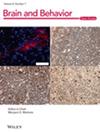COVID-19-Associated Cytotoxic Lesions of the Corpus Callosum in Chinese Patients: A Retrospective Study
Abstract
Background and purpose
Cytotoxic lesions of the corpus callosum (CLOCCs) are a rare clinicoradiologic syndrome, exceptionally rare in association with coronavirus disease (COVID-2019). This study aimed to investigate the neurological features of COVID-19-associated CLOCCs and gain insights into their underlying pathophysiology.
Methods
A retrospective evaluation was conducted on patients with COVID-19-associated CLOCCs admitted to our neurological diseases unit. The evaluation included comprehensive analysis of clinical presentations, laboratory findings, and radiological data.
Results
From December 17, 2022, to December 31, 2023, our center identified CLOCCs in eight individuals with clinically established COVID-19 who underwent brain magnetic resonance imaging (MRI). The majority of patients (7/8) presented with fever preceding neurological symptoms. The spectrum of neurological findings encompassed altered consciousness (5/8), headache (4/8), cognitive and behavioral disturbances (4/8), ataxia (2/8), dysarthria (2/8), pyramidal signs (2/8), and visual impairments (2/8). Peripheral blood markers of inflammation and cytolysis revealed trends that paralleled disease progression. Elevated cerebrospinal fluid protein levels were observed in a single patient, whereas cell counts, glucose, and chloride levels were unremarkable. Treatment with glucocorticoids and antiviral medications led to complete clinical remission, with subsequent MRIs (7/8) showing radiological improvements within 3 days to 2 weeks posttreatment.
Conclusions
Our study shows that CLOCCs associated with COVID-19 are characterized by a favorable prognosis and distinct MRI features, similar to those observed in other clinical contexts. This underscores the importance of including CLOCCs in the differential diagnosis of COVID-19 and highlights the need for ongoing research to address the neurological condition of SARS-CoV-2 infections and to inform preventive and therapeutic strategies.


 求助内容:
求助内容: 应助结果提醒方式:
应助结果提醒方式:


